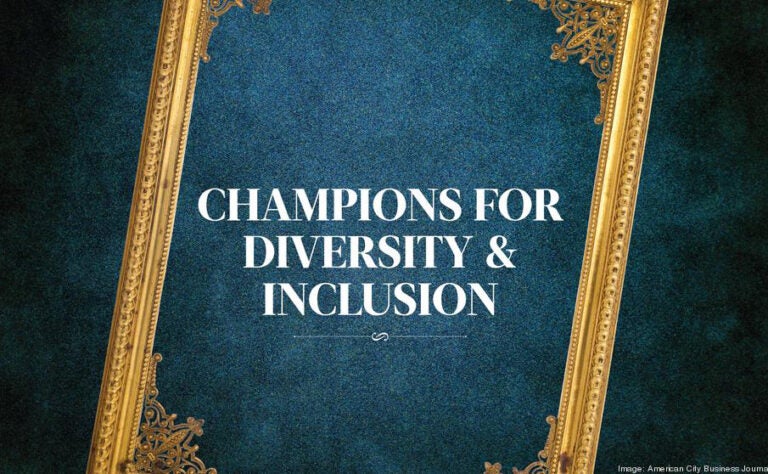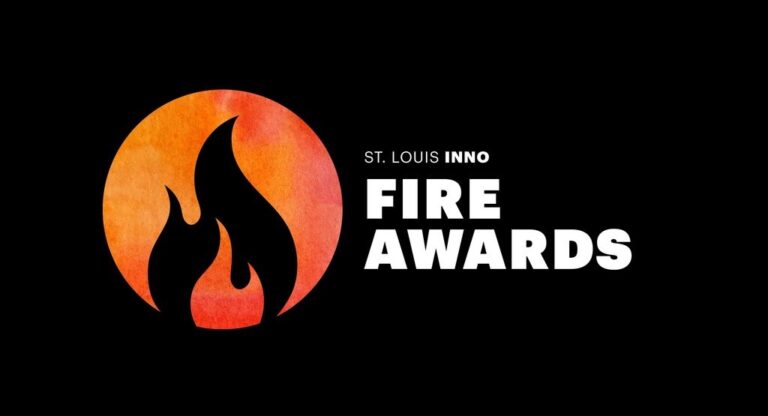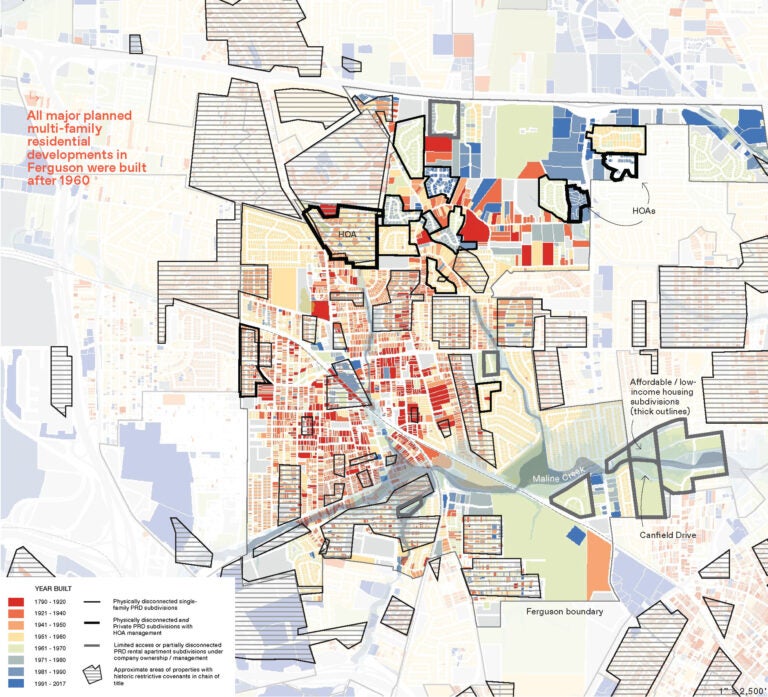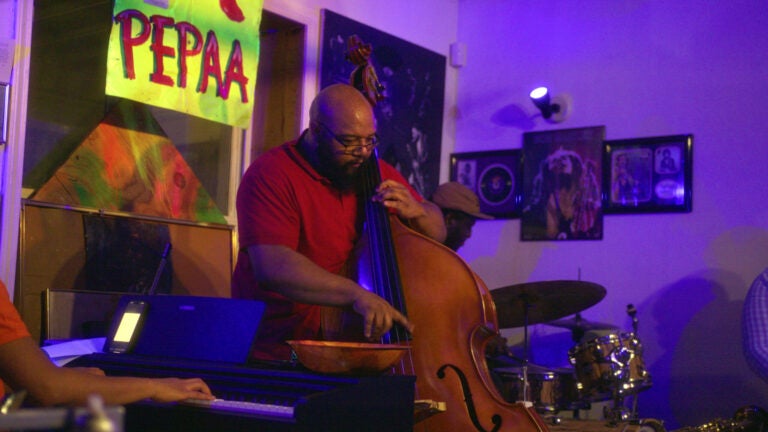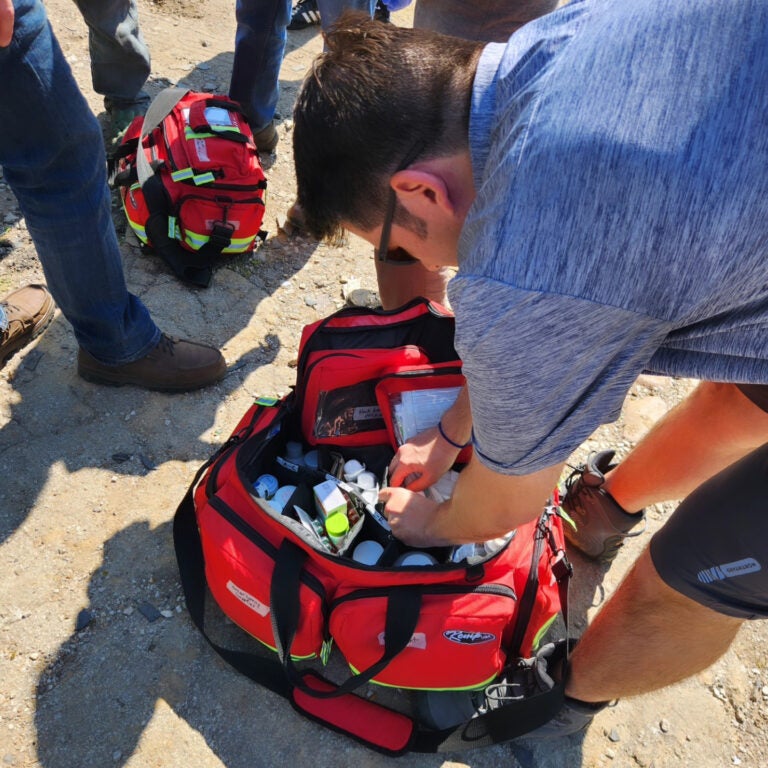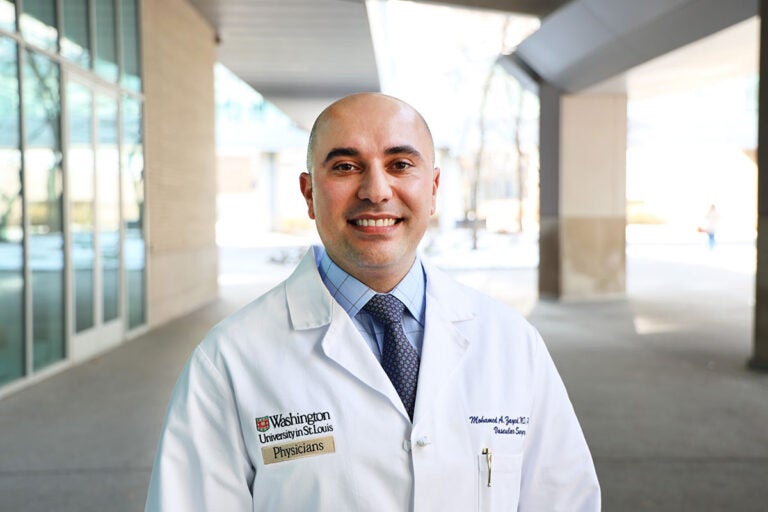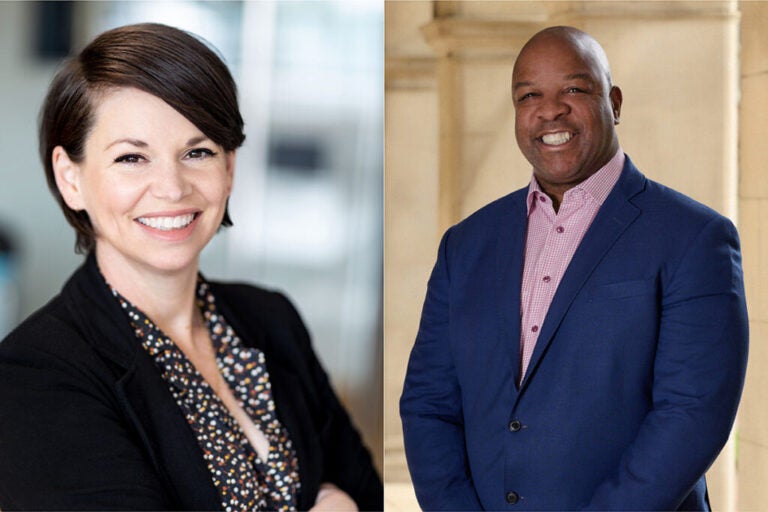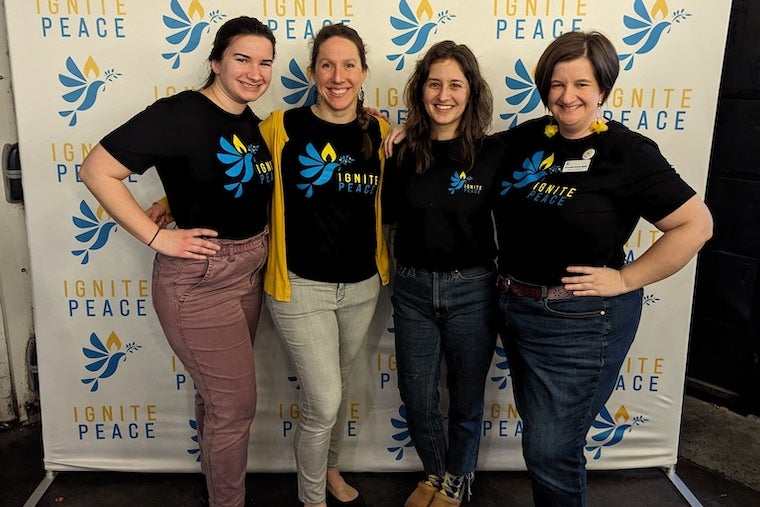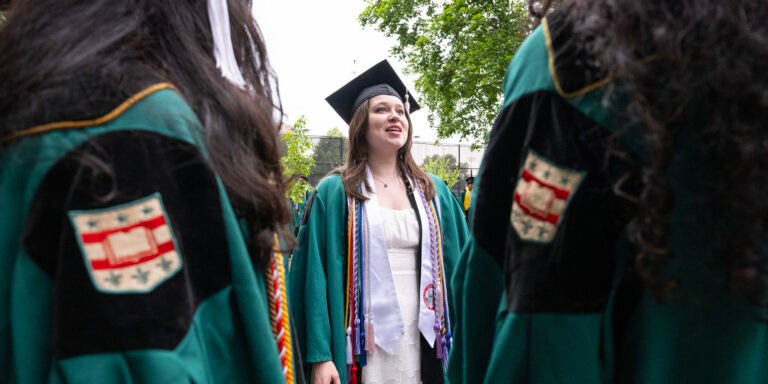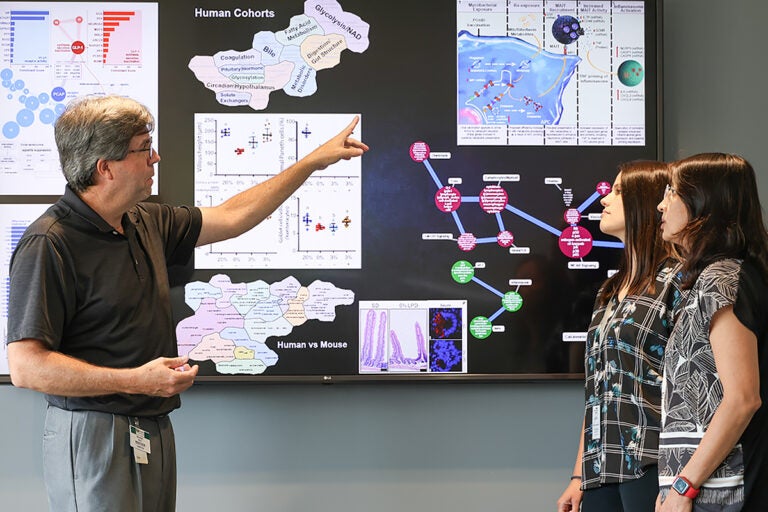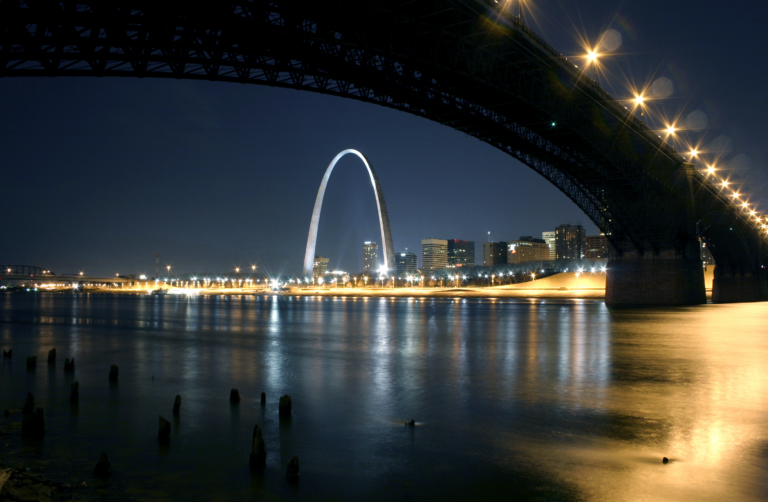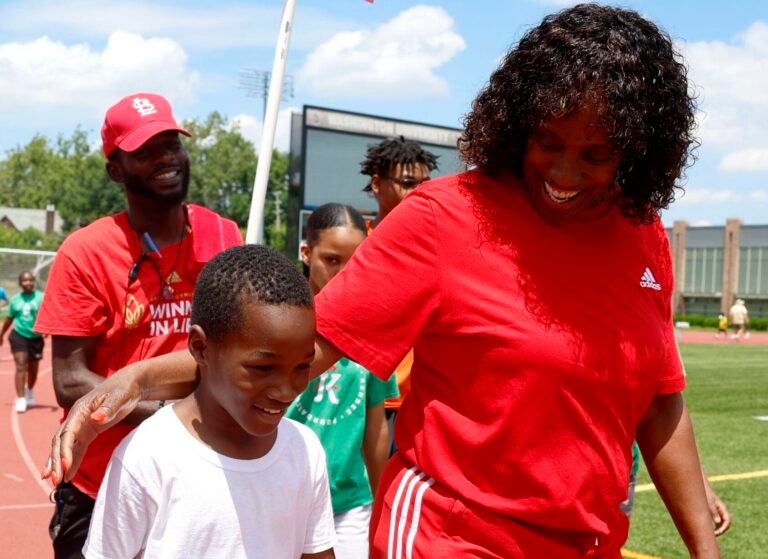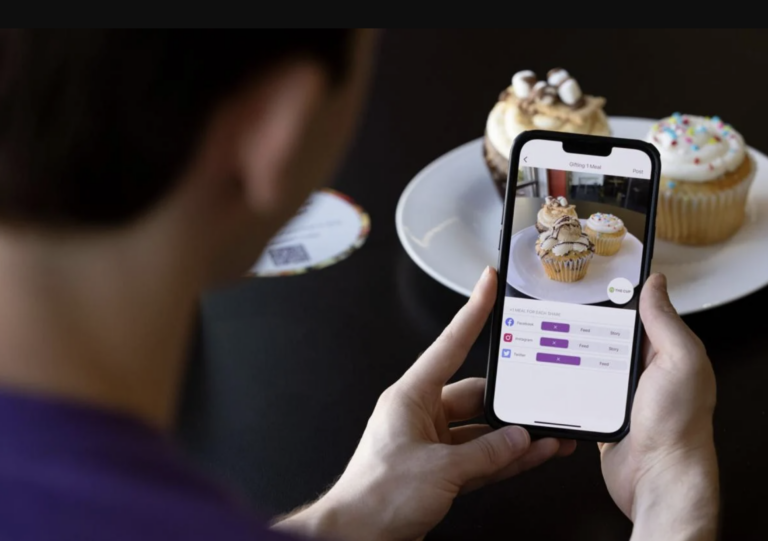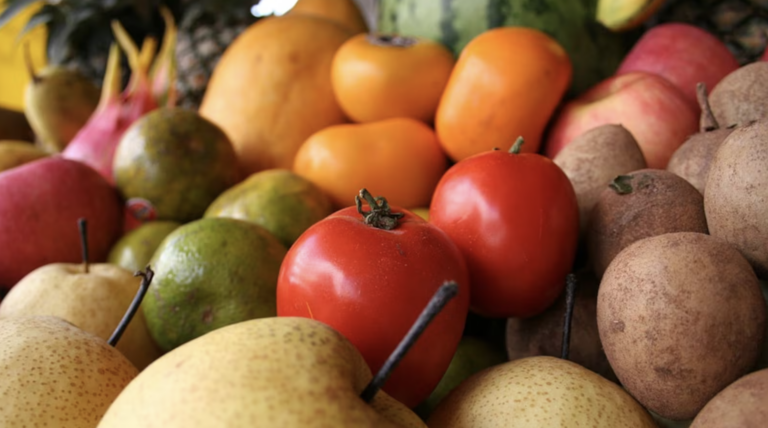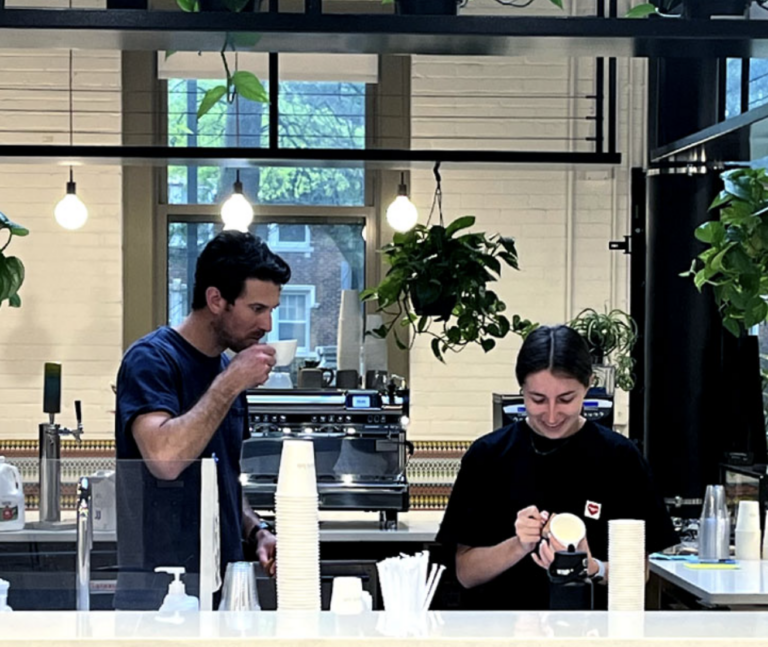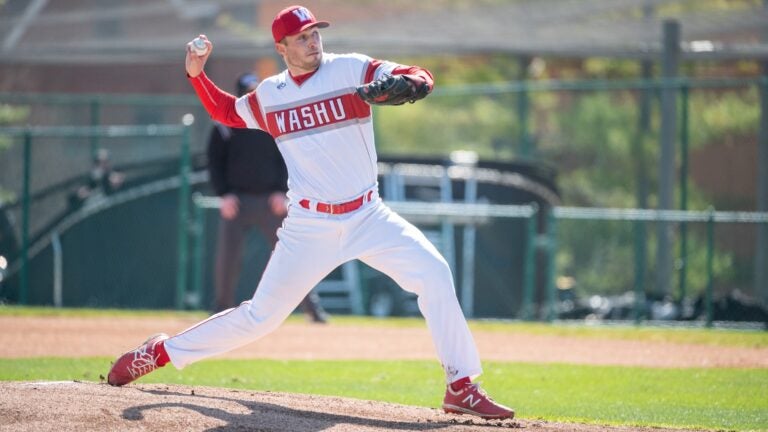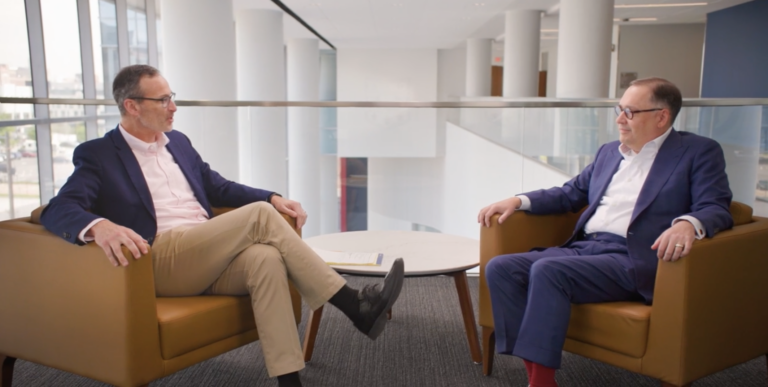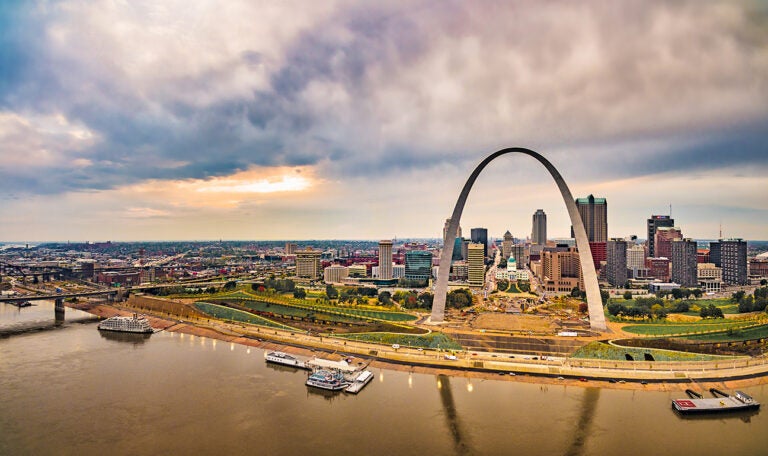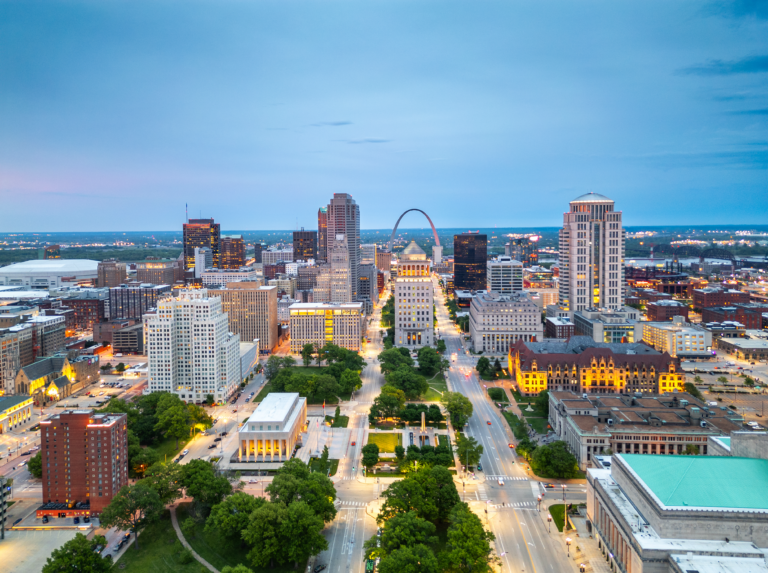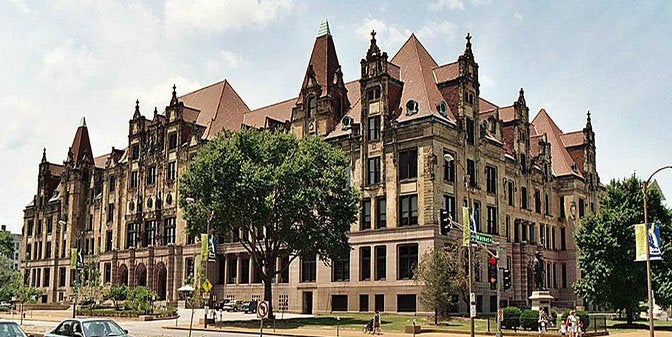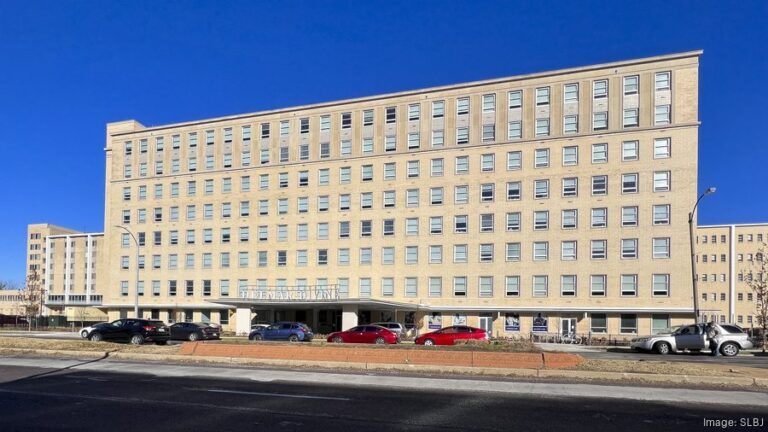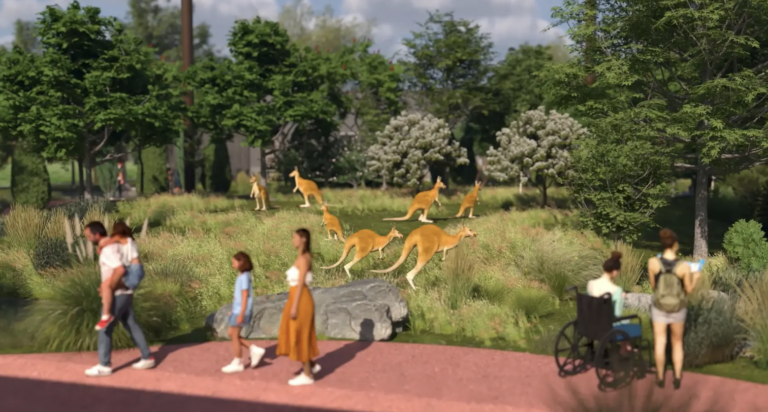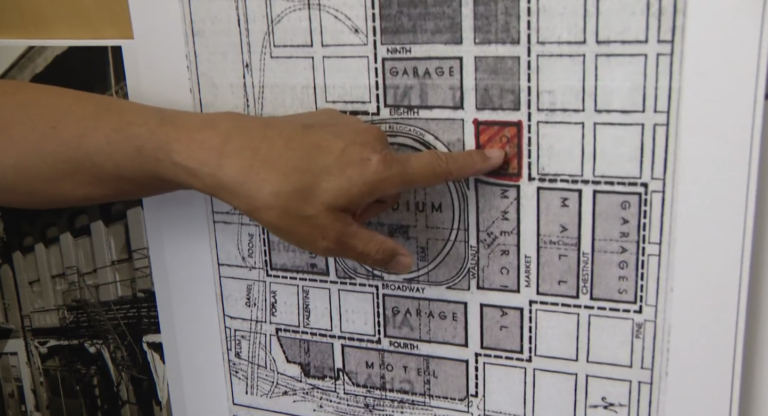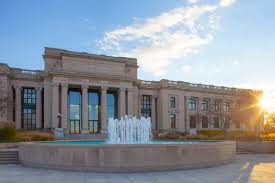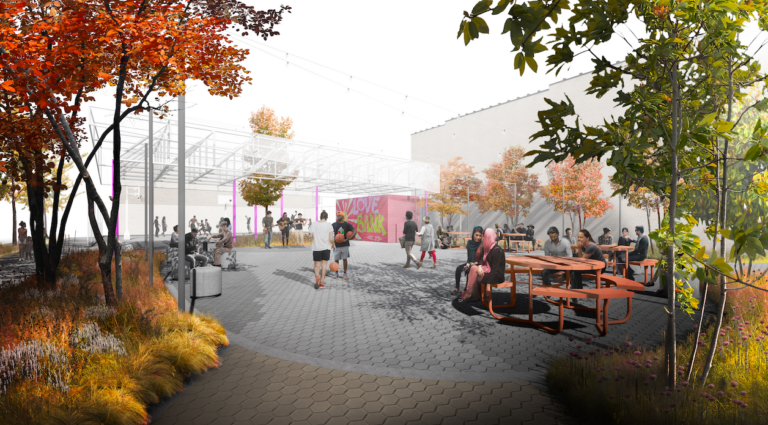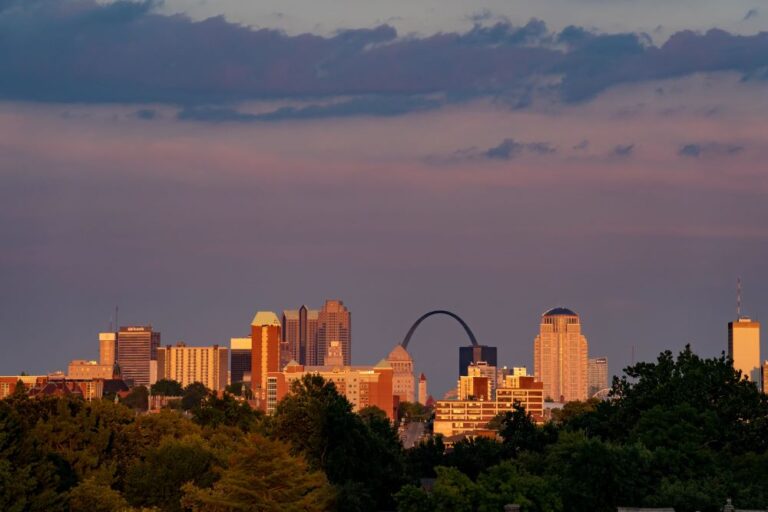Stay informed about WashU’s collaborations, community engagement, and local impact right here in our hometown. Explore news not just from St. Louis, but also from across the nation, highlighting the region’s influence and contributions.
WashU leader, alumni recognized for commitment to diverse workplaces
Four members of the Washington University in St. Louis community are recipients of the St. Louis Business Journal’s 2024 Champions for Diversity & Inclusion Awards.
Five WashU founders recognized at St. Louis Inno Fire Awards
On July 9, the St. Louis entrepreneurial community came together for St. Louis Inno’s Fire Awards, which recognizes the innovators shaping the entrepreneurial ecosystem and applauds companies and organizations growing their teams, launching new products, and positively impacting society. The companies recognized include five WashU alumni, and we are thrilled to see their continued commitment to St. Louis and the impact their startups are having on the local ecosystem and beyond.
The infrastructure of fragmentation
In “Radical Atlas of Ferguson, USA,” which will be released by Belt Publishing Aug. 6, Professor Patty Heyda from Washington University in St. Louis utilized more than 100 maps to chart the often-opaque forces that have shaped Ferguson, Missouri, and other first-ring American suburbs since the early 1980s. Tax incentives, housing codes, roadways, policing, philanthropy, even landscaping — all can work against the fundamental betterment of residents’ lives.
Cinema St. Louis highlights WashU student filmmakers
Seven films created by WashU students will be featured in the 24th annual St. Louis Filmmakers Showcase in 2024. Organized by Cinema St. Louis, the festival highlights work written, directed, edited and/or produced by St. Louis natives and by those with strong local ties.
Bringing Healthcare to the Streets: The Mission of Street Med STL
In a world where healthcare often operates on rigid schedules and within traditional settings, there exists a growing need to adapt to the realities of those who cannot easily access or adhere to such structures. This is where organizations like Street Med STL step in, redefining healthcare delivery by taking it to the streets, quite literally.
Zayed to lead new Division of Surgical Sciences
Mohamed A. Zayed, MD, PhD, a vascular surgeon known for his pioneering research in vascular diseases, has been appointed director of the newly established Division of Surgical Sciences in the Department of Surgery at Washington University School of Medicine in St. Louis. He will assume his new role July 1.
University members selected for Focus St. Louis leadership class
Members of the Washington University in St. Louis community are among those selected by Focus St. Louis, the region’s premier leadership organization, to participate in its 2024-25 civic leadership programs. Lindsey Alt, director of leadership development and of the Institute for Leadership Excellence in the Office of Human Resources, and Sean Armstrong, dean of the School of Continuing & Professional Studies, were selected among 60 local leaders.
The path of a community organizer
Experiences with St. Louis organizations led WashU alumna Samantha Searls to a career in advocating for immigrants. Now a program director at Cincinnati’s Ignite Peace, with a focus on immigrant rights, Searls was named one of the city’s 10 Women of the Year for 2023.
Opening doors
This spring saw the graduation of the first cohort of the WashU Pledge, the bold scholarship initiative for Pell-eligible students from Missouri and southern Illinois set into motion by Chancellor Andrew Martin at his 2019 inauguration.
WashU Medicine launches Center for Translational Bioinformatics
Washington University School of Medicine in St. Louis is launching a Center for Translational Bioinformatics, an innovative joint effort of the university’s McDonnell Genome Institute and the Institute for Informatics, Data Science & Biostatistics. The center will bring together experts from diverse fields to accelerate precision medicine research and improve patient care by integrating comprehensive patient data and expansive genomic datasets.
Groups poised to make St. Louis a national hub for neuroscience
The bioscience community in St. Louis is collaborating on what it hopes will be the financial footing to make our region the neuroscience hub of the world. BioSTL, Washington University, along with others are working together to help secure a $160 million grant that would continue growing the neuroscience scene in St. Louis.
Construction of Eads Bridge 150 years ago shows what can happen with regional collaboration
This year, St. Louis celebrates the 150th anniversary of the Eads Bridge, which was an incredible feat of engineering when it opened in 1874. At my inauguration as chancellor of Washington University in St. Louis five years ago, I drew on the Eads Bridge as an example of what St. Louis and WashU can achieve when we unite in common cause.
Researchers now prescribing fruits, vegetables to fight heart disease in St. Louis
Prescribing medicine helps doctors respond to heart disease. Now, researchers here are studying if prescribing fruits and vegetables might help prevent it. The new Washington University study, called NutriConnect, examines if increasing access to healthy food can create lasting, positive lifestyle changes for people at risk for heart disease — the leading cause of death in St. Louis city, county and Missouri.
St. Louis ‘Olympic Day’ celebrated at Francis Field, site of the 1904 Games
St. Louis’ Olympic Day celebration on Friday, June 21, 2024 allowed participants to walk side-by-side with our region’s Olympians, including Jackie Joyner-Kersee, Jim Campbell, Sarah Haskins, Ty Keough, and Scott Touzinsky.
How a St. Louis app is turning food photos into cash for pantries
As a Washington University student, Andrew Glantz launched an app he hoped would turn food photos into food donations. A decade later, the app, GiftAMeal, has sent some 2 million meals — and hundreds of thousands of dollars — to food banks across the country.
Hope for Alzheimer’s Disease: WashU researchers see solution on horizon
Dr. Jorge Llibre-Guerra and his colleagues at Washington University’s Knight Alzheimer Disease Research Center are making strides in understanding the disease’s causes, development, chemical blood markers and treatments. Yet much work remains, and clinical trials are underway.
WashU study seeks to increase community health through ‘prescription vegetables,’ ease impact of food deserts
A Washington University Doctor is leading a project studying the concept of “prescriptions for fruits and vegetables” that will help people in the St. Louis Metro access discounted fruit and vegetables.
Black Lab Coffee now open in University City inside Washington University’s Lewis Collaborative building
Black Lab Coffee opened at 725 Kingsland Ave. in University City earlier this year and, in a way, we’re ruining the surprise. Embedded in Washington University’s Lewis Collaborative building – a 3.75-acre hub for the arts – it’s a little hard to find, but more than worth the trip.
Loutos does what he once thought was impossible — makes MLB debut!
Somehow, someway, the reality of pitching in the big leagues — something that even Ryan Loutos often thought was far-fetched considering he hailed from Division III Washington University — exceeded his wildest dreams.
Winning STL: Washington U. aims to build on world-class research with neuroscience facility
Andrew Martin, chancellor of Washington University in St. Louis, discusses the new Neuroscience Research Building, critical brain research and how attracting top scientists can benefit St. Louis.
St. Louis region breaks employment records as workforce population grows
More people are working in the St. Louis region than ever before, according to a report from the U.S. Department of Labor. The St. Louis region gained nearly 31,000 workers over the past year, making it the seventh-best U.S. metro area for job growth. The region broke through the top 10 for the first time since 1990. The number of people working in the 14-county region that includes the Metro East has risen 2.16% this year — surpassing the national rate of 1.7%.
New Gateway South partner says project has great potential for economic growth in region
From the Arch grounds south along the Mississippi River, historic manufacturing buildings will soon be a center for advanced manufacturing. Clayton-based Real Estate investment firm Millstone Company is the newest partner in the Gateway South project by Good Developments Group. President Bob Millstone tells KMOX he signed onto the project because he sees great potential of economic growth for the region.
10 things St. Louis does really, really well
Experiencing the best of St. Louis is as simple as figuring out what the Gateway City does well—and leaning into that. Our list draws on more than a decade of research, and while it’s by no means exhaustive, you could use it as a cheat sheet to take pride in the region—or as a bucket list for visitors.
City awards $3.7M in grants focused on vacant lots, affordable housing
The city of St. Louis’ Community Development Administration (CDA) said Wednesday it has awarded $3.7 million through its Neighborhood Transformation Grants program. The funding is being provided through programs focused on community-driven development, affordable housing, vacant lot beautification and neighborhood planning. CDA began awarding its Neighborhood Transformation Grants in 2023, starting the program with funds from the federal American Rescue Plan (ARPA).
$30M expansion planned for Maxine Clark’s Delmar Divine development
Delmar Divine, the mixed-use redevelopment of the former St. Luke’s Hospital built on the “Delmar Divide,” will undergo a second phase of development. Construction is expected to begin later this year to add about 80 new apartments, additional offices and community space at Delmar Divine, located at the former St. Luke’s Hospital at 5501 Delmar Blvd. in the city of St. Louis’ West End neighborhood.
Saint Louis Zoo WildCare Park projected to generate over $660 million in regional economic impact within 10 years
Saint Louis Zoo WildCare Park released a new fly-through rendering video and an economic impact report projecting that the project will generate over $660 million in economic activity across the St. Louis region within the next 10 years. WildCare Park, a safari park and conservation center under development in north St. Louis County, is expected to open to the public in 2027.
Effort to honor a century-old Chinatown in St. Louis moves forward
It was lost in plain sight: a Chinatown in downtown St. Louis that existed for nearly a century. It never made it to the history books and barely made the news. Now there’s a widespread effort to honor these stories in light of recognizing the city’s shared past.
A St. Louis Museum Revisits a Famous but Complex World’s Fair
A new exhibit at the Missouri History Museum examines “the triumphant side and the tragic side” of the 1904 spectacle to present a fuller story.
Love Bank Park reopens on Cherokee Street after years of redevelopment efforts
After years of planning and development, restaurateur William Porter and other Cherokee Street leaders and community members reopened Love Bank Park Sunday afternoon to play basketball, chess, hear live music and eat.
